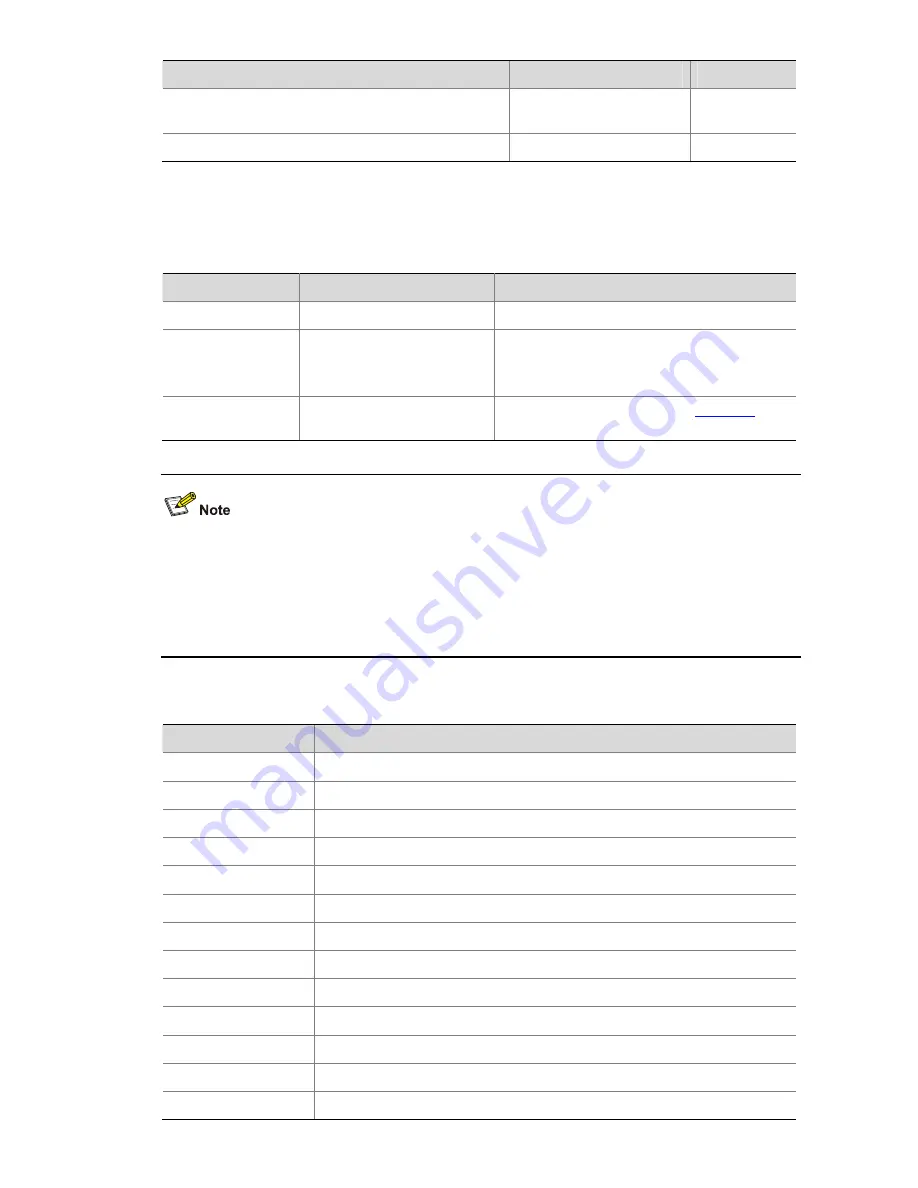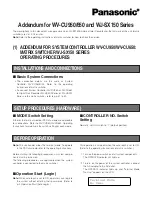
1-7
To do…
Use the command…
Remarks
Configure the banner to be displayed when a user
enters user view (non Modem login users)
header shell text
Optional
Configure the banner to be displayed before login
header motd text
Optional
Configuring CLI Hotkeys
Follow these steps to configure CLI hotkeys:
To do…
Use the command…
Remarks
Enter system view
system-view
—
Configure CLI
hotkeys
hotkey
{
CTRL_G
|
CTRL_L
|
CTRL_O
|
CTRL_T
|
CTRL_U
}
command
Optional
The
Ctrl+G
,
Ctrl+L
and
Ctrl+O
hotkeys are
specified with command lines by default.
Display hotkeys
display hotkey
Available in any view. Refer to
Table 1-2
for
hotkeys reserved by the system.
By default, the
Ctrl+G
,
Ctrl+L
and
Ctrl+O
hotkeys are configured with command line and the
Ctrl+T
and
Ctrl+U
commands are NULL.
z
Ctrl+G
corresponds to the
display current-configuration
command.
z
Ctrl+L
corresponds to the
display ip routing-table
command.
z
Ctrl+O
corresponds to the
undo debugging all
command.
Table 1-2
Hotkeys reserved by the system
Hotkey
Function
Ctrl+A
Moves the cursor to the beginning of the current line.
Ctrl+B
Moves the cursor one character to the left.
Ctrl+C
Stops performing a command.
Ctrl+D
Deletes the character at the current cursor position.
Ctrl+E
Moves the cursor to the end of the current line.
Ctrl+F
Moves the cursor one character to the right.
Ctrl+H
Deletes the character to the left of the cursor.
Ctrl+K
Terminates an outgoing connection.
Ctrl+N
Displays the next command in the history command buffer.
Ctrl+P
Displays the previous command in the history command buffer.
Ctrl+R
Redisplays the current line information.
Ctrl+V
Pastes the content in the clipboard.
Ctrl+W
Deletes all the characters in a continuous string to the left of the cursor.
















































